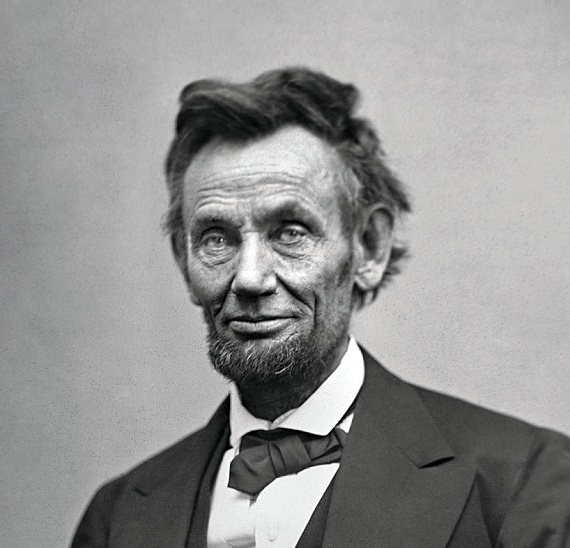Many people know that the state of West Virginia came to be during the Civil War, but very few know that its admission to the union was particularly controversial. Even in the north, free from the influence of the departed southern states, many opposed Lincoln’s desire to admit West Virginia. Opposing Lincoln’s ultimate stance, those who offered candid deference to the Constitution considered Congress’ enabling act that admitted West Virginia as an unconstitutional usurpation.
Still, the genesis of West Virginia’s a complex story, beginning with Virginia’s response to an impending demonstration of force against the south. On April 16, 1861, Lincoln called for 75,000 troops to be raised while Congress was not in session. The new force’s sole purpose was to prepare for an invasion of the southern states. For the first time in American history, a president intended to raise an army by himself without congressional approval. Additionally, he aimed to direct the forces to invade American states and use force against any opposition that stood in his way.
In response, an assembly comprised of delegates representing all of Virginia’s counties organized a convention to consider secession. This was hardly a rush to judgment – just two weeks earlier, a prior convention in the state consciously voted against an ordinance of secession, hoping for a compromise to be adopted. Several settlement plans had been proposed in Congress, and war was not a foregone conclusion at that point. Despite the urgings of the states in the Deep South that had already seceded, Virginia embraced a candid course for resolution before May.
Lincoln’s unilateral call for forces was considered an incredibly hostile action in the south, especially in the states that up until that point had given Lincoln the benefit of the doubt. Virginia, being one of these states, was faced with heightened apprehension toward the blatant threat of force. Moreover, Virginia’s delegates realized that Lincoln’s army would have to march directly through the heart state to confront South Carolina and the other seceded states. The state’s convention, selected by republican elections, ultimately voted to depart the union on April 17.
Despite this decision, some delegates from several counties in Virginia refused to recognize their state’s position on secession. These delegates reorganized with the intention of advocating for secession from Virginia to create a pro-union Virginian government. Accordingly, they called for a convention to meet in Wheeling to discuss the matter. Their initial convention culminated with a decision to wait until Virginia had approved its secession referendum before pursuing any additional course of action.
Sentiments in Virginia were highly supportive of leaving the union, and the state’s referendum passed overwhelmingly by a vote of 132,201 for to 37,451 against. The patience of Virginia’s citizens had run its course, and the people would not tolerate threats of force against the Commonwealth. In response to the referendum, a second Wheeling convention met, this time claiming that all Virginia state offices were vacant and that the delegates would act as the legitimate government of Virginia. Meanwhile, before West Virginia was admitted to the union, Lincoln made official statements recognizing the new West Virginian government. Additionally, he promptly allowed the state to send two senators to represent it in the United States Senate alongside two representatives who took their own seats again in the House of Representatives. This raised further controversy in the United States Senate, where the objections of James A. Bayard of Delaware were overridden and the body voted to seat the new senators.[1]
Congress passed an enabling act in July of 1864 which would admit West Virginia to the union conditionally – it required the implementation of a gradual emancipation plan according to Lincoln’s independent penchants. This attempt to admit West Virginia became so controversial that even Lincoln’s own cabinet of hand-picked advisors could not agree on its constitutionality. In consideration of this debate, Secretary of State William Seward and Attorney General Edward Bates drafted letters to Lincoln expressing their opinions on the matter.
Seward maintained that West Virginia’s incorporation was constitutional on the basis that Virginia engaged in treason against the union:
“The organized political body which has committed this treason, having broken and trampled under its feet the Constitution, and even the Union, of the United States, is still standing in that treasonable attitude within the jurisdiction of the State of Virginia, but it has been dislodged from the portion of that jurisdiction which is contained within the new State of West Virginia.”
Of course, the Constitution maintains a very different definition of treason than what Seward articulated:
“Treason against the United States, shall consist only in levying War against them, or in adhering to their Enemies, giving them Aid and Comfort.”
Under this definition, and under the assumption that the secession of southern states was unconstitutional, the north’s actions fit the Constitution’s definition of treason closer than the actions of the southern states.
Despite Lincoln and Seward’s claims that secession was illegitimate and treasonous, they both professed that there was no longer a legitimate government in Richmond. In doing so, they made the claim that only the separatist government’s stance on the matter should be accepted for the purposes of statehood. In Seward’s mind, the act of secession precluded the state from maintaining its own physical boundaries and government. This train of logic is utterly confounding – if secession wasn’t an authentic action, how could the federal government constitutionally ignore Richmond’s stance on the issue? Similarly, if Virginia’s government in Richmond became illegitimate the moment it seceded, wouldn’t all the American states be classified similarly, since they had absolved themselves from all ties to the British crown? Neither Lincoln nor Seward could maintain a rational, coherent narrative regarding these questions.
Lincoln had many detractors against his plan to admit West Virginia, but none were as convincing as his own Attorney General, Edward Bates. Bates, a prominent Whig who also revered Henry Clay, refused to rubber stamp the plan. Hardly a Lincoln critic, Bates played a prominent role in the arrest of southern sympathizers in the north, and sought the conviction of many for sedition. Even Bates, considered by some to be a lackey of Lincoln, realized the unconstitutionality of the plan.
Expressing his criticisms of the plan in an official letter, Bates concluded that any reading of the Constitution did not allow for the federal government to create a state:
“I observe, in the first place, that the Congress can admit new States into this Union, but cannot form States: Congress has no creative power, in that respect; and cannot admit into this Union, any territory, district or other political entity, less than a State. And such State must exist, as a separate independent body politic, before it can be admitted…And that result, (i.e. the making of the State by Congress) would falsify the universal and fundamental principle of this country, that a free American State can be made only by the people, its component members. Congress has no power to make a State.”[emphasis Bates]
Bates asserted that the federal government had no role in making a state, but that was exactly what Lincoln intended to do in West Virginia. Not only did his proclamation imply that this, but it dictated to the state a prerequisite for statehood – it was to implement a gradual emancipation plan according to Lincoln’s independent wishes. This was an alien concept – the Constitution provides no power to the federal government to dictate the terms of statehood. The state is first sovereign under its own will, whereupon afterward it can petition for statehood. The federal government can choose not to admit a state to the union, but it cannot dictate its terms of statehood.
A previous federal attempt to implement permanent mandates (that would last beyond statehood) to territories, the Missouri Compromise, was incredibly controversial on the same constitutional grounds. This was because of the perception it would create a new subordinate group of “second-class” states without the power to form their own policies regarding slavery. Thomas Jefferson’s reaction to this act was to deem it as “a fire bell in the night” which would signal the “the knell of the union.” For similar reasons, it is doubtful that his reaction to this incident would be much different.
In the past, states first created and ratified their own republican constitutions on the basis of their own sovereign specifications. This was done as a precursor to entering the federal union, and the federal government never before questioned the legitimacy of this practice. In Tennessee’s case, the state had written and ratified its own Constitution, which came into effect concurrent with the state’s admission into the union. In Vermont, the state was for a time an independent republic with its own constitution prior to its admission to the United States in 1791. Prior to its admission, Texas maintained itself as an independent republic for about a decade, with its own system of laws and its own constitution. In every case, the ratification of a republican constitution and the existence of a republican legislature predated admission into the federal union. Noticeably, Bates’ remark that the federal government lacked the power to create a state was corroborated by history.
Departing from Lincoln and Seward, Bates also made the observation that the Constitution used plural language to specify that multiple legislatures would need to specify consent to form a new state from its territory:
“It speaks in the plural – “the legislatures of the States concerned” – i.e. Virginia and West Virginia…Here the proposition is to make two states out of one. Each one, of course, must have a legislature, and the Constitution requires the consent of both legislatures, before the thing can be done. Now, it is said that the legislature of Virginia (Old Virginia) has consented; but it is not pretended that the legislature of West Virginia has consented – nor that there is, in fact, any such legislature to give consent.”
As Bates noted, West Virginia did not have its own legislature to consent to the legislature of Virginia. Furthermore, the union had considered Virginia’s current government in Richmond to be an illegitimate one, and did not seek to ascertain their stance on this matter. Instead, Lincoln and Seward sought to undermine “Old Virginia” by claiming the West Virginia government was the only republican government within the state.
Throughout the entirety of his presidency, Lincoln had maintained an unmistakable stance that the act of secession was illegitimate and unconstitutional. If this was the case, Virginia would have remained in the union and remain invested with its own sovereign powers – including those granting the inception of a new state within its borders. Since Lincoln would not negotiate with the Confederate states because he believed it would acknowledge their legitimacy, he eschewed any chance for peaceful reconciliation and ignored the Virginian government completely.
West Virginia eventually acquiesced to Lincoln’s mandate for statehood, implementing the gradual emancipation plan into a new constitution that was ratified on March 26, 1863. For the first time, a new breed of subordinate state without the powers of the original states was formed. Unlike the process through which the original union was created, through a compact among states, in this case the federal government dictated its own ideals as an ultimatum. Jefferson’s fears had come to fruition.
By adopting the position that West Virginia was free to join the union under its own will without the express sanction of Virginia, Lincoln had unwittingly embraced the principle he was willing to plunge the country into war over – secession. Only through the notion that secession was just, could Lincoln justify his position. Through this incident, Lincoln demonstrated that he was willing to accept secession when it benefitted him, only decrying the principle when it hindered his chief political aim – the permanent solidification of national authority.
[1] Otis Rice and Stephen Brown, West Virginia: A History, Second Edition (Lexington: University Press of Kentucky, 1993 ), 122.








3 Comments